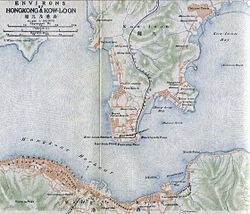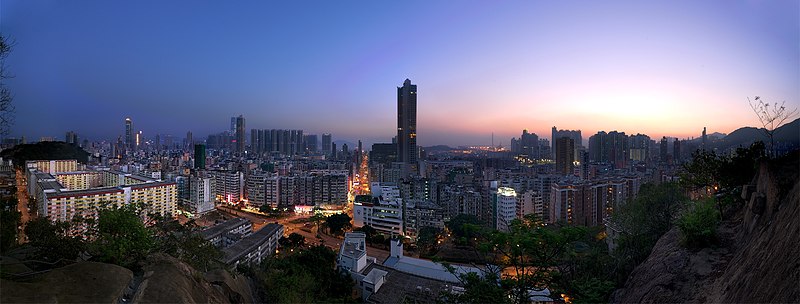經過多年激動人心的發展之後,在經濟烏雲的籠罩下,美國的博物館建設和擴張已放慢到幾乎停滯的地步。歐洲的經濟氣候更是充滿了風暴,這讓那些歷史悠久、曾由政府支持的博物館到處去祈求資金。
相比之下,中國的財政可謂如日中天。
各種博物館,大的、小的、政府支持的、私人資助的,正雨後春筍般地冒出來。僅2011年一年,就出現了約390家新博物館。而且這種增長仍在持續。中國正在以超現實的規模開辦博物館。
許多博物館都面面俱到,是歷史、民俗、科學、政治、藝術和娛樂的大雜燴。以藝術為專題的博物館在中國是一個相對新的概念。藝術博物館的模式大部分是從西方舶來,中國仍在摸索其形式,它們往往處於時間範圍的兩個極端上,要麼關注最新的,要麼關注最古老的。
直到不久前,中國的當代藝術博物館仍一直由私人運營,或是作為商業公司,或是為了展示富裕收藏家虛榮心的陳列室。去年10月,上海當代藝術博物館的開張創立了一個重要的先例,這是中國首家由政府出資的展示最新藝術作品的博物館。
如果說官方遲遲未認可中國藝術的國際聲望的重要性,他們一旦重視起來,卻是大手筆的。這座上海博物館的建築相當壯觀。其英文名稱是
Power Station of Art (藝術的發電廠),因為它改建自19世紀的一家發電廠。它以第9屆上海雙年展(9th Shanghai Biennale)開張,從一開始就帶着全球主義的震撼,雙年展遍布其廣闊的展廳,也延伸到了周邊地帶。
此次雙年展還剩下一小段時間,將於3月31日閉幕。與此同時,在上海以西約1600英里(約合2575公里)外,在戈壁灘邊緣的綠洲城市敦煌,另一
個博物館,或一座像博物館似的建築,正拔地而起。這座建築物遠比上海當代藝術博物館新潮,其目的不是為了吸引群眾來觀賞新藝術品,而是不讓他們去觸摸、損
壞老藝術品,尤其是那些古老的、正迅速磨損的佛教壁畫,它們遍布敦煌地區數以百計的石窟中。
這些壁畫繪製於4至14世紀之間,敦煌是絲綢之路上的一個中心點,這些石窟組成一個近乎博物館的整體,展示出跨越千年的受世界各地影響的中國文化。
儘管上海和敦煌的博物館大相徑庭,但它們都具有中國新文化機構的一個共同特徵:雄心。這通常簡單地表現在規模上。
當修葺一新的中國國家博物館於2011年在北京開放時,官方的宣傳多是關於其建築規模,單就展廳面積來說,它是世界上各種博物館中最大的,然而它所展示的中國歷史卻在關鍵的地方有所刪減。
去年秋天,這種嗜巨症再次在上海表現出來。就在當代藝術博物館於10月份開張的同一天,上海的第二家國家級博物館——中華藝術宮也開張了。這家博物
館主要關注20世紀的中國現代派藝術,它所在的、外觀稀奇古怪的紅漆建築物,原本是為了2010年世博會建造的。藝術宮自稱是中國新藝術博物館中最大的。
它也確實如此,然而每個人都能看出,它無所不包的展品將會從更認真的挑選中受益。
然而上海的這兩家國家級博物館只不過是這座城市新藝術冰山的一角,其他的機構雖然規模不大,但數量極其龐大。大多數小博物館都屬於私人擁有或出資。其中至少有兩家,民生現代美術館和上海外灘美術館,聲譽還不錯。
民生美術館是由一家銀行出資,專註於當代中國藝術。該館副館長周鐵海本人是一位知名藝術家,約10年前,他的諷刺畫《喬駱駝》(Joe
Camel)曾在國際上巡迴展出。在他的管理下,這家美術館為一些職業發展中期的藝術家組織了有價值的回顧展,這些人在國外名聲並不大,但在國內有一定的
影響。
外灘美術館於2010年開放,經營模式類似德語國家的一種藝術館,只有流動展品而不擁有藏品。該館以展示非中國藝術而聞名,這一趨勢也已擴散到一些
較大的博物館。在中華藝術宮開放時,它推出了一個名為“來自世界的問候”的特別展覽,展示了一些借來的頂級零星藏品,來自大英博物館(British
Museum)、阿姆斯特丹國立博物館(Rijksmuseum in Amsterdam),以及惠特尼美國藝術博物館(Whitney Museum
of American Art)等。上海當代藝術博物館最近主辦了來自巴黎蓬皮杜中心(Pompidou Center)的超現實主義作品的展覽。
對於數量不斷增長的、為滿足私人收藏家虛榮心而創建的博物館來說,展品國際化是一條宗旨。
去年晚些時候,上海的億萬富翁、投資商劉益謙及其妻子王薇開辦了他們的龍博物館,館藏展品包括古代青銅器、毛澤東時代的繪畫和當代藝術作品。這對夫婦的關注點現在完全轉向新藝術作品,而且作為熱情的藝術品購買者,他們計劃在上海開辦第二家博物館。
屬於這一類的還有一家籌建中的博物館,它將展示余德耀(Budi Tek)的藏品。余德耀是一名印尼華裔企業家,他曾在2011年躋身於《藝術與拍賣》(
Art & Auction)雜誌推出的國際藝術世界10位最有實力的人物。當時他加入收藏行列不足6年,但已經在雅加達建立起一家博物館。現在,得益於與中國政府達成的一項協議,他得到了一座供他支配的建築物。那是一座舊飛機庫,將被翻新和擴建成上海的又一家博物館。
鑒於目前新藝術在中國所具有的門麵價值,也鑒於這樣一個事實:據《福布斯》(Forbes)統計,中國億萬富翁的人數名列世界第二,這意味着未來私立博物館的前景似乎是無限的。這些博物館將如何發展卻是一個問題。蓋房子容易,收集重要作品就不那麼容易了。
如今的許多私人藏品僅僅是世界市場推動的產品:來自同樣的三位熱門中國藝術家、熱門歐洲藝術家,如此等等。雖然展示這類私人收藏品的博物館與日俱
增,但中國迄今仍沒有一家博物館,能把過去30年的國內當代藝術作品給觀眾做一個全面的歷史性介紹。而且,世界其他地方的博物館認為是理所當然的東西,比
如學術研究、教育拓展,以及收藏的首要目的,在中國許多新藝術機構中或者缺乏、或者還處於萌芽階段。
缺乏知識淵博的行政管理,如何能阻止未來由國家支持的新藝術博物館無序地向著越大越好的方向發展?國立博物館毫無疑問地會越來越多。又如何能阻止私
人收藏家把博物館的美名賦予他們的儲藏空間呢?這些空間只不過是他們安放藝術品的地方,除了通過物質積累來炫耀個人實力,沒有更崇高的目標。
更崇高的目標正是敦煌的項目所要實現的。而且不只是一個更崇高的目標:除了要保護歷史,也要象徵性地糾正過去的錯誤。
敦煌周邊有幾個地方都找到了佛窟,但其中的大多數(約700個)佛窟雕鑿在一個叫莫高的地方的長崖上,莫高位於敦煌城外幾英里處。傳說稱,一位雲遊的和尚在公元4世紀被閃耀的金光吸引來到這裡。和尚認為這裡是聖地,於是在山崖上挖了一個洞,住了下來。
後來來了其他和尚。他們挖了更多的洞穴作為寺廟和禪房,在洞壁上畫滿了畫。還建了許多灰泥佛雕,並上了顏色以裝點整體環境,其中有一些巨大的佛雕。莫高窟吸引了大批朝聖者,成了一個修行中心,擁有一個來自中國各個朝代、西方、印度,乃至更遠地方的手寫經文的巨大文庫。
14世紀,隨着貿易從陸路改為海路,過往這裡的交通減少了許多,住在這裡的和尚也減少了。不知在什麼時候,出於安全考慮,有人將共計5萬部的一批手
稿封存在一個洞窟里。後來,莫高窟的存在被人遺忘了。到了19世紀末,莫高窟又重新被發現。從1900年起,前後有歐洲、俄羅斯、日本和美國的探險家來到
這裡。他們刮下牆上的壁畫運回國。他們還發現了封存的藏書,瓜分後,將多數運出中國。清朝政府對此沒有進行任何干預。
那以後很久,直到在20世紀40年代,中國政府才全部收回這些石窟,開始修復它們。它們的傳奇隨着時間而增長。1979年,也就是莫高窟對公眾開放
的那一年,這裡迎來了2萬名參觀者。幾年前,這裡每年遊客人數猛增至80萬。此時,壁畫受損的威脅已經十分嚴重,因為它們長期曝露在人體散發出的潮濕和二
氧化碳中。如今,差不多所有的石窟都不對外開放。
為了能既保護莫高窟的藝術價值,又保留它作為遊覽勝地的價值,負責莫高窟的考古學家向中國政府遞交了一份提案,建議在這裡蓋一座遊客中心,讓遊客既
能體驗石窟,又只在最小程度上觸及洞穴。這項計劃獲得了批准。由北京的建築師崔凱設計的遊客中心由一組未來派的沙丘形穹頂建築組成,將於今年對外開放。
遊客中心將在細緻的規範下運行。遊客們來到中心後,將先看一部有關敦煌的絲綢之路歷史的短片,然後他們將置身於幾處保存最完好洞穴內部景觀的巨型數
字投影之中。這之後,他們將乘坐大巴車去幾英里外的莫高窟,在那裡他們能參觀幾個實際洞穴,以及一個展示莫高窟文物的博物館,展品包括小件的雕塑、紡織
品、手繪經卷,最後他們乘車回遊客中心。
其中的一些藏品將自4月19日起在曼哈頓的華美協進社中國美術館(China Institute
Gallery)展出,開啟“敦煌年”活動,其間將有許多活動來吸引西方對莫高窟的關注,也希望吸引他們的資金。敦煌遊客中心總投資5200萬美元(約合
3.23億元人民幣),其中3300萬美元來自中國政府,其餘的需要自籌。
這一項目不僅是中國唯一的以電子技術輔助保護遺迹的例子。一場名為“歷史的迴響:響堂山佛教石窟寺”(Echoes of the Past:
The Buddhist Cave Temples of
Xiangtangshan)的展覽記錄了一個類似的案例,這次展出在2010年由芝加哥的斯瑪特美術館(Smart Museum of
Art)組織。但是敦煌在中國的文化想像中佔據了一個特殊的位置。保護敦煌是為了彌補過去的疏忽。可能最重要的是,在沙漠的邊緣實地看到這些石窟藝術,是
一次深刻的體驗。
但是在電子技術介入後,這種體驗還會同樣深刻嗎?如果是,使用多少電子技術屬於可以接受的範圍?與在當代文化方面一樣,中國正在提出問題,這些問題
既有關藝術的性質,也涉及博物館的功能,而這些是我們很少考慮的。如今,我們自己的文化機構難以籌到資金,展示億萬富翁虛榮的博物館在我們這裡也呈上升趨
勢,而21世紀的博物館觀眾沉溺於通過手機屏幕欣賞藝術,中國在博物館學上的漫長求索會給我們很多借鑒。
翻譯:曹莉、林蒙克
Art
A Building Boom in China
By HOLLAND COTTER March 22, 2013
After years of fevered activity, museum building and expansion in the
United States have slowed to a crawl under a low-lying economic cloud.
In Europe, where the climate is even stormier, venerable state-financed
institutions go begging for cash.
In
China, by contrast, the fiscal sun shines.
Museums — big, small, government-backed, privately bankrolled — are
opening like mad. In 2011 alone, some 390 new ones appeared. And the
numbers are holding. China is opening museums on a surreal scale.
Many are multipurpose affairs, mixing history, ethnography, science,
politics, art and entertainment. The museum devoted only to art is a
relatively novel concept in China. Models for it, most of them Western,
are still being sorted out, though they tend to line up at either end of
the temporal spectrum, focusing on the very new or the very old.
Until recently, museums of contemporary art in China had been
privately run, either as corporate entities or as the vanity showcases
of rich collectors. Last October, an important precedent was set with
the opening of the Shanghai Contemporary Art Museum, the country’s first
government-supported museum of up-to-the-minute work.
If official acknowledgment of the importance of Chinese art’s
international stature was long delayed, it was fairly bold when it
arrived. The Shanghai museum, popularly known as the
Power Station of Art
— it’s in a converted 19th-century power plant — is physically
spectacular. It opened with a major globalist bang in the form of the
9th Shanghai Biennale, which filled the capacious interior and spread out into the surrounding city.
The Biennale still has a little time to run; it closes March 31.
Meanwhile, some 1,600 miles west of Shanghai, at the oasis city of
Dunhuang on the edge of the Gobi Desert, another museum, or something
like a museum, far less conventional than the Power Station, is under
construction. Its purpose is not to attract crowds to new art, but to
keep them away from damaging contact with old art, specifically the
ancient and rapidly deteriorating Buddhist murals that cover the
interiors of hundreds of caves in the Dunhuang area.
Painted between the fourth and 14th centuries at a central point on
the Silk Road, the caves constitute a virtual museum of cosmopolitan
Chinese culture spanning a millennium.
As different as they are, the Shanghai and Dunhuang museums share one
quality typical of China’s new cultural institutions: ambitiousness.
Often this is simply measured in size.
When the revamped
National Museum of China
opened in Beijing in 2011, much was made, officially, of its being,
square foot for square foot, the single largest museum of any kind in
the world, even though the history of China it told was strategically
truncated.
The taste for gigantism was evident again in Shanghai last fall. On
the same October day that the Power Station opened, so did a second
state museum in Shanghai, the China Art Museum, sometimes called the
China Art Palace.
Dedicated largely to 20th-century Chinese modernism, and housed in a
zany lacquer-red structure originally erected for the 2010 World Expo,
it advertised itself as the biggest museum of new art in the country. So
it is, though anyone could see that its exhausting display would
benefit from serious editing.
But Shanghai’s two state museums are only the tip of the city’s
new-art iceberg, with smaller institutions making up in sheer numbers
what they lack in size. Most of the smaller museums are privately owned
and financed. At least two, the
Minsheng Art Museum and the
Rockbund Art Museum, have solid reputations.
The Minsheng, supported by a banking corporation, specializes in contemporary Chinese art. Under its deputy director,
Zhou Tiehai,
himself a well-known artist (his satirical “Joe Camel” paintings made
the international rounds a decade or so ago), the museum has organized
valuable retrospectives for midcareer artists who have been influential
in China without being well known abroad.
The Rockbund, which opened in 2010, operates as a kind of kunsthalle,
with rotating shows and no collection. It is notable for highlighting
non-Chinese art, a trend that has spread to larger museums. When the
China Art Palace opened it featured a
special show,
“Congratulations From the World,” of premier odds-and-ends loans from
the British Museum, the Rijksmuseum in Amsterdam and the Whitney Museum
of American Art. The Power Station recently played host to
Surrealist surveys from the Pompidou Center in Paris.
An international mix is the rule in the proliferating number of vanity museums created by private collectors.
Late last year, Liu Yiqian, a billionaire Shanghai investor, and his
wife, Wang Wei, opened their Dragon Museum (also known as the Long
Museum), with holdings that included ancient bronzes, Mao-era paintings
and contemporary works. The couple’s attention is now focused
exclusively on the new and, being ardent shoppers, they have plans for a
second museum in the city.
That will be joined by yet another museum, to hold the collection of
Budi Tek, a Chinese-Indonesian entrepreneur who in 2011 made the
Art & Auction list
of the 10 most powerful figures in the international art world. At the
time he had been buying for a scant six years but had already
established a museum in Jakarta. Now, thanks to a Chinese government
deal, he has at his disposal a building, an old airplane hangar, ready
to be renovated and expanded for a museum in Shanghai.
Given the current trophy value of new art in China, and the fact that
the country has, according to Forbes, the world’s second-highest number
of billionaires, the prospect of further private museums seems endless.
How those museums will shape up, though, is a question. Building walls
is one thing; gathering significant work is another.
Many private collections now are simply products of what the global
market pushes: the same three hot Chinese artists, hot European artists,
and so on. But while museums for such collections proliferate, China
still has no museum offering anything like a comprehensive historical
view of the country’s contemporary art over the last 30 years. And
features that are taken for granted in museums elsewhere — scholarship,
educational outreach, overarching curatorial perspectives — are absent
or in a nascent stage in many of China’s institutions of new art.
Without knowledgeable administrative oversight, what is to prevent
future state-sponsored museums of new art — and surely there will be
more — from mindlessly going the bigger-is-better route? What is to
prevent private museums from being glorified storage facilities — places
for collectors to park art, with no higher purpose than to flaunt
personal power through material accumulation?
Higher purpose is precisely what the Dunhuang project has going for
it. Or maybe higher purposes: to preserve the past, but also,
symbolically, to right past wrongs.
Buddhist caves are found in several sites around Dunhuang, but a
large majority, some 700, are carved into long cliffs at a place called
Mogao
several miles outside the city. According to legend, in the fourth
century a wandering monk was drawn to Mogao by a vision of flashing
lights. Believing the place holy, he scooped out a cave from the cliff
and stayed.
Other monks came. More caves were excavated as temples and meditation
halls, and their walls covered with paintings. Stucco sculptures of the
Buddha, some very large, were created and painted to produce total
decorative environments. The site became a magnet for pilgrimages, and a
major center of learning with a vast library of handwritten manuscripts
gathered from imperial China to the east, and India and beyond to the
west.
In the 14th century, as trade shifted from land to sea routes,
traffic dropped off; the number of monks diminished. At some point, a
library of some 50,000 manuscripts was sealed up in a single cave for
safety. Mogao’s existence was forgotten. In the late 19th century, it
was rediscovered, and starting in 1900 a succession of explorers — from
Europe, Russia, Japan, the United States — arrived on the scene. They
chipped paintings off walls and sent them home. They found the sealed
library, divided it up and shipped most of it out. The Qing dynasty did
nothing to prevent any of this.
It was only long after that, in the 1940s, that China fully reclaimed
the caves and began restoring them. Over time, their mystique grew. In
1979, the year they were opened to the public, 20,000 visitors came. By
the late 2000s, the annual count had soared to 800,000. By this time,
the threat of damage to the paintings, through exposure to
human-generated humidity and carbon dioxide, had become severe. Today,
almost all the caves are closed.
To preserve Mogao as both a work of art and a tourist goal,
archaeologists in charge of the site submitted a proposal to the Chinese
government for a visitor center that would let people experience the
caves with minimal access. The plan was approved. The
visitor center, designed by the Beijing architect Cui Kai as a group of futuristic, dunelike domes, will open this year.
The operation will be carefully regulated. Visitors will come to the
center, be shown a short film on the Silk Road history of Dunhuang, and
then see immersive digital projections of several of the most elaborate
cave interiors. They will then go a few miles by bus to Mogao, where
they will see several real caves and spend time in a museum of Mogao
artifacts — portable sculptures, textiles, handwritten scrolls — before
returning to the center.
A
selection
of such objects will be at the China Institute Gallery in Manhattan
beginning April 19 to kick off “The Year of Dunhuang,” a series of
events geared to attracting Western attention, and dollars. Of the $52
million that the center will cost, $33 million is from the Chinese
government; the rest must be raised independently.
This project is by no means the only example of digitally assisted
conservation in China. A similar one was documented in a show called “
Echoes of the Past: The Buddhist Cave Temples of Xiangtangshan,”
which was organized by the Smart Museum of Art in Chicago in 2010. But
Dunhuang holds a special place in China’s cultural imagination. To care
for it is to make amends for past neglect. Perhaps most important, to
see the art of those caves in place at the desert’s edge is a deep
experience.
Will that experience be as intense with some digital intervention?
And if so, how much is acceptable? As in matters of contemporary
culture, China is asking questions, about both the nature of art and the
function of museums, that we rarely consider. But with money for our
own cultural institutions hard to come by; with billionaire vanity
museums on the rise here too; and with a 21st-century museum audience
addicted to seeing art through cellphone screens, China’s long
museological learning curve has much to teach us.






















